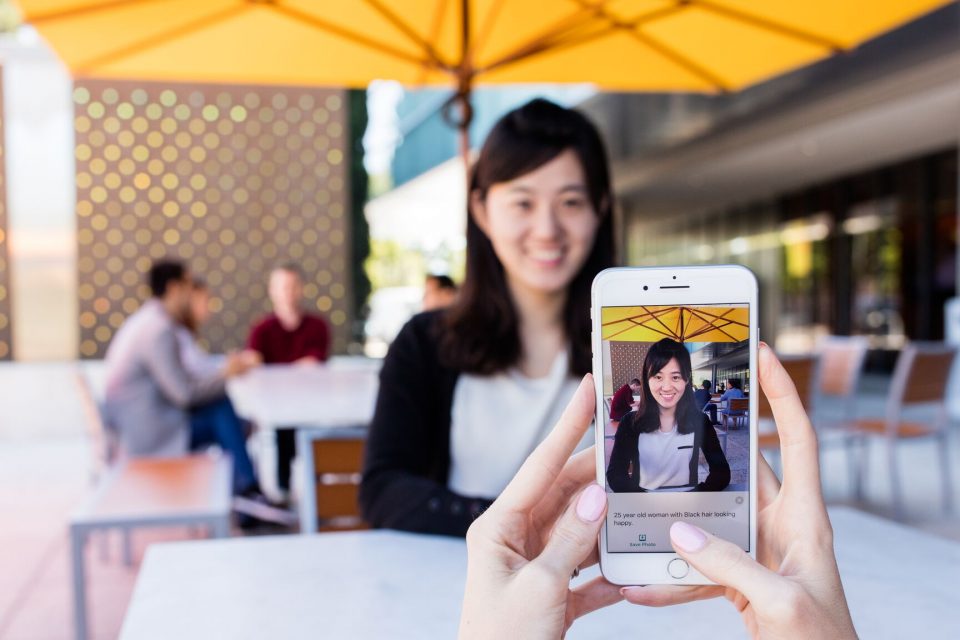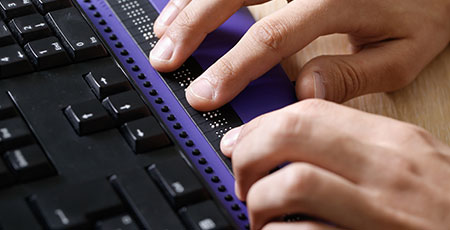Empowering Independence With Assistive Modern Technology for the Blind
The assimilation of assistive technology into the lives of people with visual impairments stands for a significant development in advertising independence and self-sufficiency. From cutting-edge display viewers to advanced smart canes, these devices not only improve daily navigation and interaction yet additionally encourage customers to engage meaningfully in various facets of life. As we check out the myriad advantages and real-world applications of these modern technologies, it comes to be vital to analyze the hidden variables that add to their performance and the potential for future advancements in this essential area.
Introduction of Assistive Modern Technology

The advancement of assistive modern technology is based in concepts of inclusivity and empowerment. Innovations in software, hardware, and sensory enhancements give customers with alternatives tailored to their details requirements. From display visitors that convert text to speech, to responsive devices that convey details through touch, these devices transform the means individuals involve with their surroundings.
Along with practical applications, assistive innovation fosters higher social addition and engagement in various markets, including education and learning and employment (Speech-to-text devices for low vision). As r & d proceed to evolve, the possibility for assistive technology to even more improve the lives of aesthetically damaged individuals remains appealing, leading the way for an extra equitable society where everybody can grow
Sorts Of Assistive Tools
A variety of assistive gadgets have arised to sustain people with aesthetic disabilities, each created to satisfy details needs and enhance daily functioning. These devices range from low-tech services to sophisticated advancements, giving diverse choices for customers.
Low-tech tools consist of magnifiers and large-print materials that assist in analysis and writing. Braille devices, such as Braille slates and styluses, enable tactile analysis and interaction. Alignment and wheelchair help, like white canes, help customers navigate their setting safely.
On the greater end of the spectrum, digital magnifying systems and display viewers offer significant assistance. Digital magnifiers allow customers to enlarge text and photos on displays, while display readers transform digital content right into synthesized speech, promoting accessibility to info on mobile phones and computers.
Smart device applications also play an essential role, giving features like message acknowledgment and navigation assistance. Wearable innovation, such as clever glasses outfitted with augmented reality, is becoming a promising tool to boost situational recognition.
Advantages of Assistive Technology
The integration of assistive innovation significantly enhances the lifestyle for people with visual disabilities. These modern technologies empower individuals by promoting self-reliance, enabling them to navigate their settings better and execute everyday jobs with greater convenience. Screen readers and magnification software allow individuals to gain access to digital details, fostering educational and specialist opportunities that might have formerly been out of reach.
Furthermore, assistive devices such as wise walking sticks and GPS applications give real-time navigating assistance, enhancing mobility and safety. This raised freedom not only boosts self-confidence however also motivates social engagement, allowing customers to participate even more fully in their neighborhoods.
Assistive innovation likewise promotes interaction, aiding customers get in touch with others through voice recognition and text-to-speech applications. This capacity is crucial for maintaining partnerships and accessing critical information.
In addition, the personalization choices available with several assistive technologies ensure that individuals can customize gadgets to their particular needs, even more improving use and performance. On the whole, the advantages of assistive technology for individuals with visual problems are extensive, promoting a more comprehensive culture where everybody can pursue their goals and goals.
Study and Success Stories
Highlighting the transformative effect of assistive modern technology, countless situation research studies illustrate how people with visual disabilities have effectively integrated these tools into their day-to-days live. One engaging example entails a college trainee who made use of screen analysis software to browse scholastic products and online sources efficiently. This innovation not only facilitated her education and learning however additionally boosted her confidence in taking part in conversations and team jobs.
One more case research study includes an expert who employs a mobile phone application made for navigating and item recognition. By utilizing this application, he has restored autonomy in both his individual and work environments, enabling him to commute individually and involve with colleagues a lot more efficiently.
Additionally, a retired person shared her experience with braille e-readers, which enabled her to access a large selection of literary works and stay linked with her neighborhood via publication clubs.
These success stories Recommended Site underscore the essential function of assistive modern technology in cultivating self-reliance, improving lifestyle, and advertising social integration for individuals with visual disabilities (Braille displays and notetakers). By embracing these cutting-edge devices, customers can get over challenges and confiscate chances that add to their expert and personal gratification

Future Fads in Assistive Modern Technology
Innovation in assistive technology is positioned to redefine the landscape of assistance for individuals with aesthetic impairments. Emerging trends emphasize the integration of expert system (AI) and machine knowing, which enhance the functionality of devices that aid with navigating and information accessibility. For circumstances, AI-driven applications are currently efficient in translating visual information in real-time, enabling individuals to engage with their atmosphere more independently.
In addition, the growth of wearable technology is progressing quickly. Smart glasses geared up with enhanced fact (AR) can supply audio summaries of surroundings, transforming just how individuals connect with public rooms. These devices not only advertise autonomy yet also foster social eyeglasses for round face female inclusion.
Additionally, the Web of Points (IoT) is making homes smarter, enabling smooth connection between assistive tools and everyday appliances. This connection equips users by making it possible for voice-activated controls and automated responses customized to individual demands.
Final Thought
In final thought, assistive Read Full Article technology plays a critical role in equipping individuals with aesthetic impairments by boosting their independence and engagement with their surroundings. The varied series of applications and devices offered not just assists in navigation and communication but also promotes social combination and opportunities for personal and professional development. As developments proceed in this field, the possibility for boosting the top quality of life for those with aesthetic problems will certainly increase, cultivating better freedom and empowerment.
